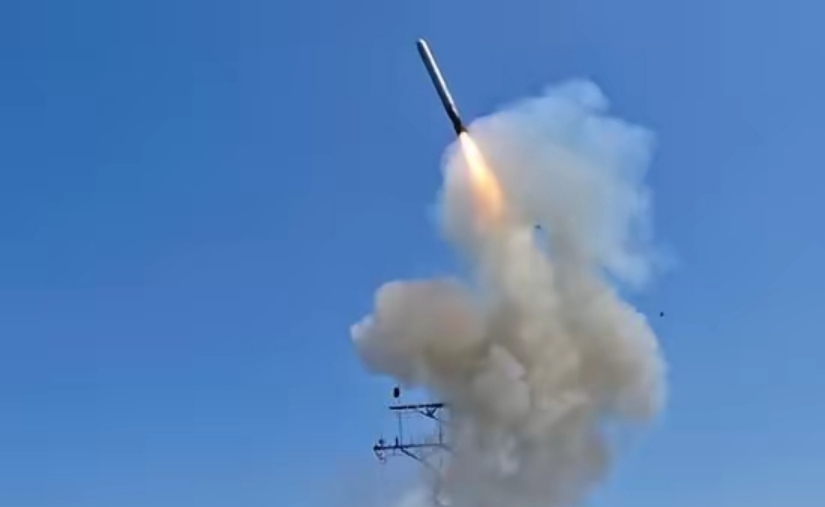
When the Trump administration repeatedly released signals to provide Ukraine with Tomahawk missiles, this cruise missile, which has been well-known since the Gulf War, once again became a global focus. The fierce opposition from Russia contrasts sharply with the calm analysis of military experts, with some seeing it as a "winning or losing hand" in changing the situation in the Russia Ukraine conflict, while others believe its actual effectiveness is limited. Breaking through the fog of public opinion, analyzing from three dimensions: basic performance parameters, practical verification results, and battlefield adaptability constraints, is necessary to clearly restore the true combat capability of this missile and understand its strategic value and practical limitations behind it.
The core performance system of Tomahawk missile is built on the basis of half a century of technological iteration, presenting distinct characteristics of "long-range, high-precision, and strong breakthrough". As a benchmark for subsonic cruise missiles, its latest model Block V has a range of over 1600 kilometers, far exceeding the coverage range of Ukraine's current "Storm Shadow" missile by 560 kilometers. If deployed in southern Ukraine, it can directly strike strategic targets such as military bases and energy hubs in the Russian hinterland. This range advantage is not simply a numerical superposition, but a reconstruction of the battlefield attack and defense logic - it allows Ukraine to launch attacks in safe areas far from the front line, completely changing the previous strategic situation of being "passively bombed".
The design of breakthrough capability reflects targeted considerations. The Tomahawk missile flies close to the ground at a subsonic speed of 0.7 Mach and typically maintains a flight altitude of less than 60 meters. It can use terrain cover to evade radar detection. In the Syrian battlefield, facing the S-400 air defense system deployed by Russia, it achieved a breakthrough success rate of 97%, and even created a classic example of a single missile passing through three air defense circles and hitting an underground command post. This "low altitude infiltration" strategy, although not as direct as the "speed breakthrough" of hypersonic missiles, has demonstrated reliable breakthrough efficiency in actual combat through mature stealth design and flight path planning.
The actual combat experience is the best yardstick for testing the performance of weapons, and the more than 30 years of battlefield performance of Tomahawk missiles provide hardcore evidence for their performance. On the first day of the Gulf War in 1991, 48 Tomahawk missiles launched precise strikes to tear apart Iraq's air defense network. The Baghdad communication building collapsed amidst the sound of explosions, ushering in a modern warfare mode of "surgical strikes".
However, the impressive performance parameters do not necessarily equate to the realization of battlefield effectiveness, as Tomahawk missiles will face multiple practical constraints on the Ukrainian battlefield. The most prominent issue is the limitation of launch platforms - although the development of land-based launchers has resumed since the United States withdrew from the Intermediate Range Nuclear Forces Treaty, the number of available 10 × 10 truck mounted mobile launch systems is limited and mainly equipped for the US military itself. In history, Tomahawk missiles were mostly launched from sea based platforms such as aircraft carriers and destroyers. However, Ukraine lacks corresponding naval vessels and supporting command systems. Even if it obtains land-based models, its deployment quantity and launch frequency will be strictly limited, making it difficult to replicate the US military's "saturation strike" combat mode.
Although Russia's air defense system cannot achieve "global interception", it still poses significant constraints. Although the Tomahawk had a successful breakthrough record in Syria, the deployment density and priority of the Russian air defense system were far lower than those on the mainland at that time. The Western Military Region of Russia has established a multi-level air defense network, combined with the coordinated operation of early warning aircraft, ground radar, and portable air defense missiles, which can significantly improve the interception probability. The Russian side has clearly stated that its existing air defense forces are sufficient to deal with Tomahawk missiles. Although this confidence has political implications, it objectively reflects that the missile is not the ultimate weapon that is "undefenable".
More importantly, there is an 'implicit threshold' for logistics and maintenance. The maintenance of Tomahawk missiles requires professional technicians and supporting support systems, and Ukrainian soldiers need to undergo systematic training to master operation and maintenance skills. If the United States provides the missile, it will inevitably need to synchronously output technical support, which not only takes a long time, but may also cause GPS signal misalignment due to Russian electronic interference, weakening its accuracy advantage. In addition, the United States may impose restrictions on the range and target of missiles to avoid the risk of conflict escalation, further reducing their tactical value.
This game around Tomahawk missiles ultimately points to the escalation of the strategic confrontation between the United States and Russia. Regardless of whether the missile is ultimately delivered or not, the strategic intent behind its performance parameters is already clear: the United States is attempting to pressure Russia by increasing the level of military aid to Ukraine, while Russia needs to find a balance between military defense and political response. The performance geometry of Tomahawk missile may have been answered, but its chain effect on the Russia-Ukraine conflict has just begun to emerge.

Driven by the Trump administration's push to relax financial regulations and the recovery of investment banking business, the market value of the six major banks in the United States has cumulatively increased by approximately 600 billion US dollars by 2025.
Driven by the Trump administration's push to relax financia…
On Christmas evening, U.S. President Trump posted on social…
According to multiple foreign media reports, the recent fin…
The middle class, once regarded as the cornerstone of Ameri…
On December 19th local time, the US military launched a lar…
The Boxing Day sunshine should have cast a false glow of pr…